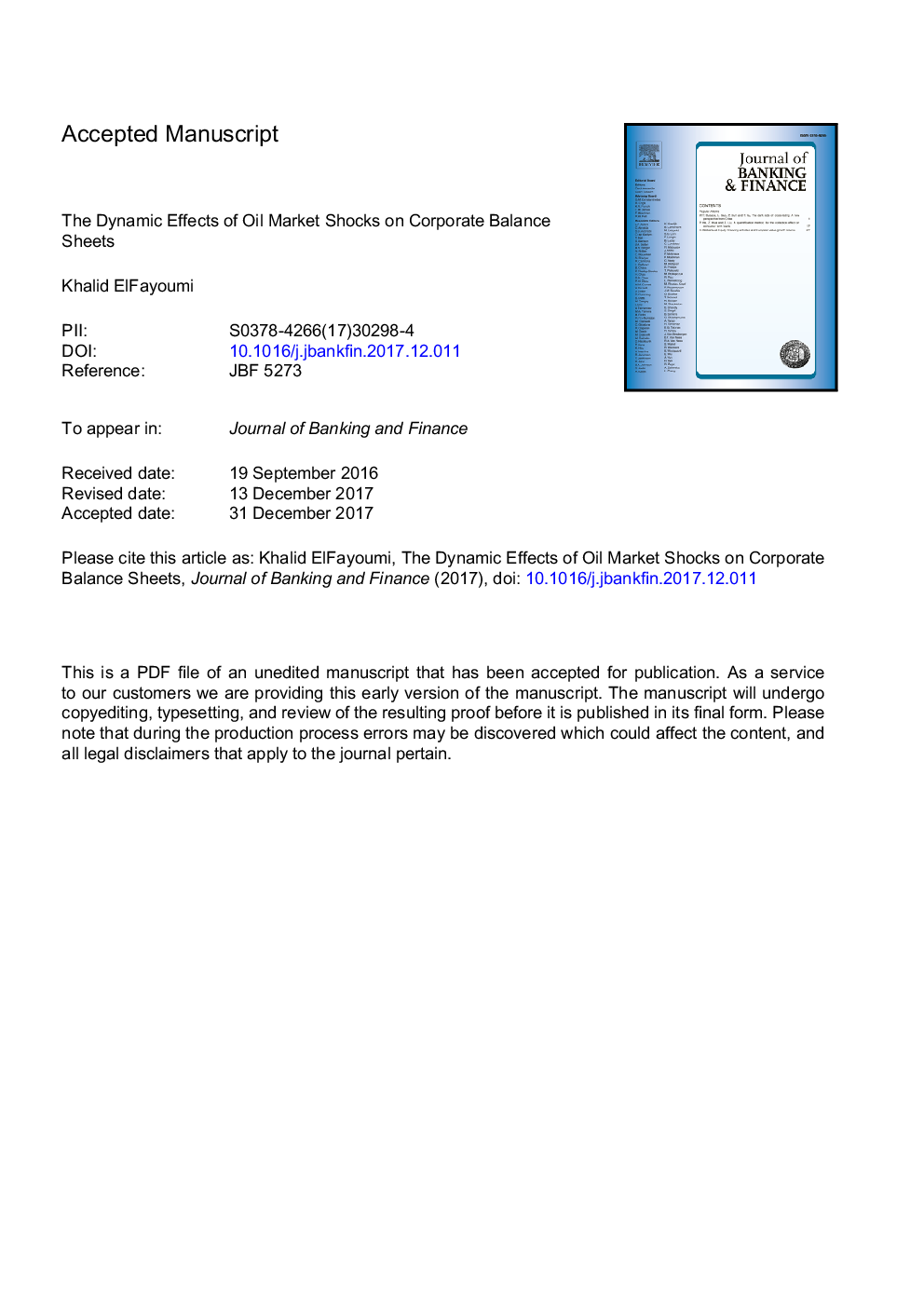| Article ID | Journal | Published Year | Pages | File Type |
|---|---|---|---|---|
| 11020512 | Journal of Banking & Finance | 2018 | 53 Pages |
Abstract
The paper estimates the dynamic impact of structural oil market shocks on the balance sheet of US firms, using industry level data covering manufacturing, trade and mining sectors. For manufacturing firms, findings indicate that an unexpected disruption in oil supply that raises oil prices by 1% lowers firm profits by 1.3% on impact. On the other hand, profits rise by 0.39% in response to the same increase in the price of oil, when it is driven by a positive movement in the global demand for oil, and by 0.79% after an unexpected surge in speculative oil demand. The positive balance sheet effect of speculative oil shocks on the manufacturing sector contrasts their negative effect on global economic activity. An explanation follows from the industry level analysis, which suggests that speculation in the oil market creates a ripple effect in downstream industries and raises inventory demand for petroleum and chemical products. In contrast to its secondary role in explaining historical variations in the price of oil and profits in trade and mining sectors, oil supply shocks are found to have been the dominant oil market innovations in driving fluctuations in manufacturing firms' profits. The analysis also finds a limited response of production costs to exogenous changes in the oil price, disputing the classic notion that the cost share of oil in an industry determines its level of exposure to oil market shocks.
Related Topics
Social Sciences and Humanities
Economics, Econometrics and Finance
Economics and Econometrics
Authors
Khalid ElFayoumi,
